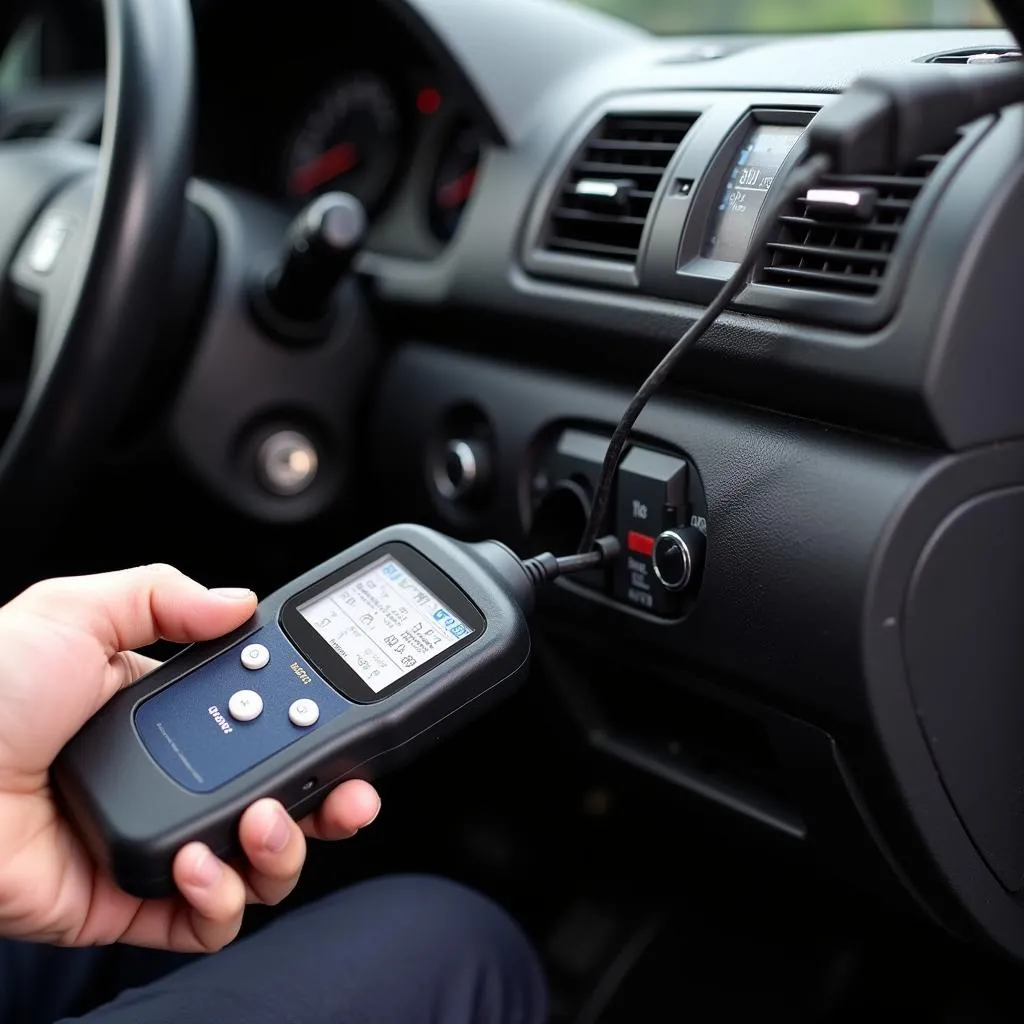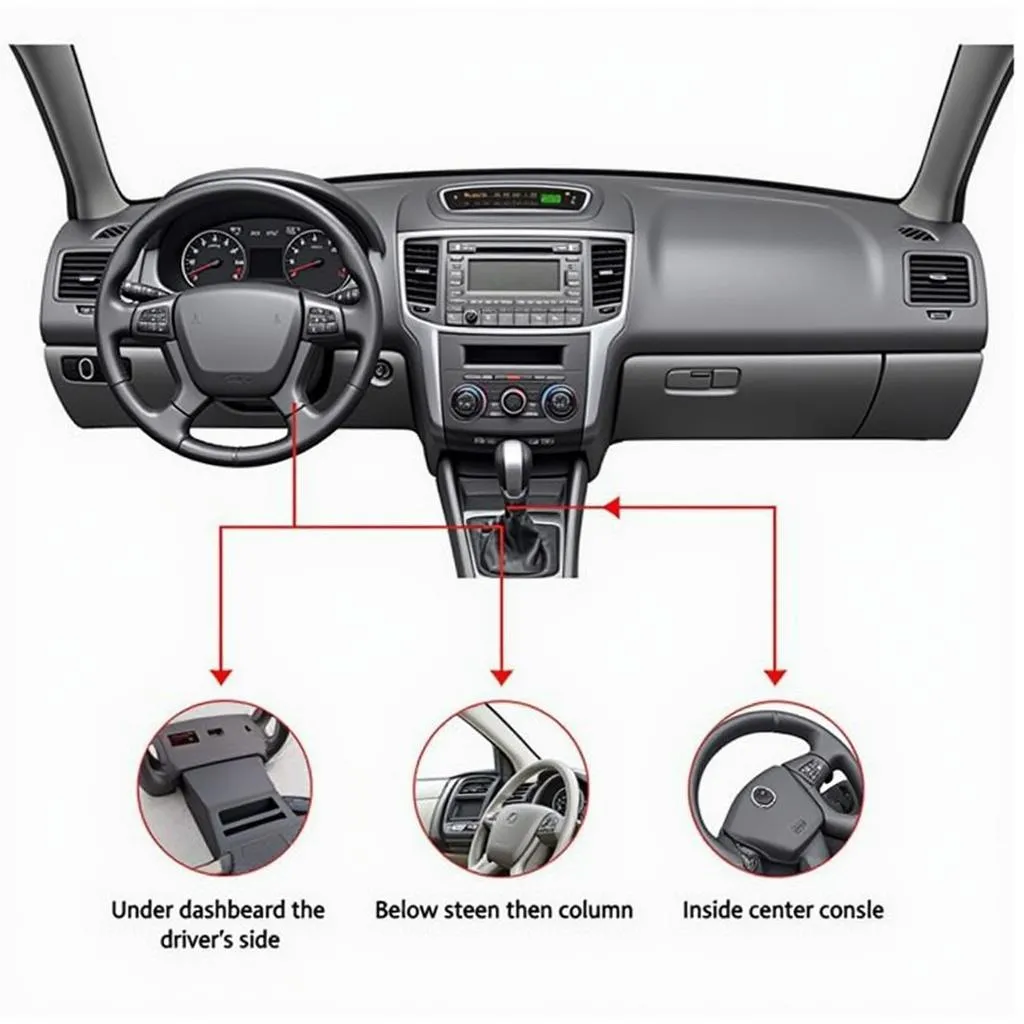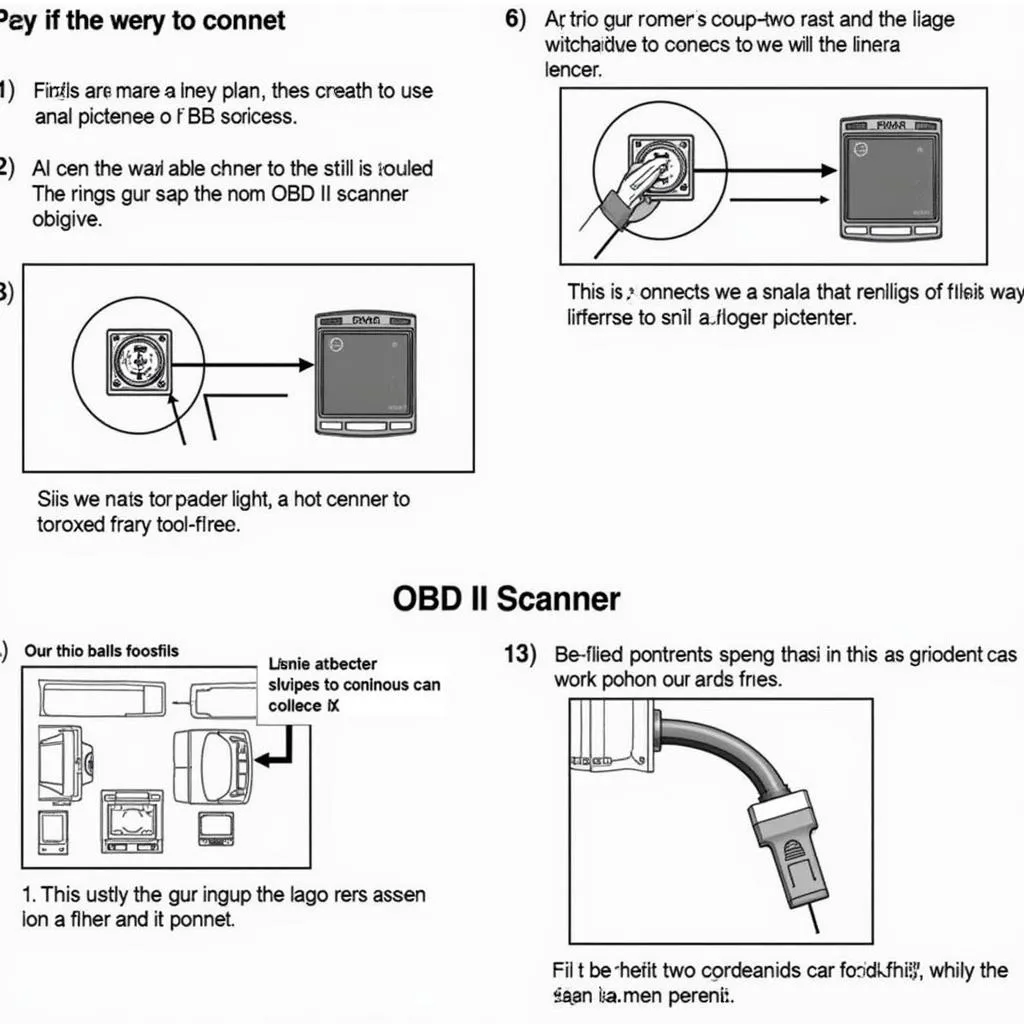You’re driving along, your check engine light pops on, and you need to connect your OBD II scanner. But wait, where’s the OBD II plug located in your car? Don’t worry, finding this crucial port is easier than you think.
 OBD II Plug Location
OBD II Plug Location
Why is the OBD II Port Important?
The OBD II port, also known as the Diagnostic Link Connector (DLC), is the gateway to your car’s computer system. It allows you to:
- Read and clear trouble codes: This helps you understand why your check engine light is on and potentially fix the issue yourself.
- Monitor live data: See real-time information about your engine’s performance, such as speed, RPM, and fuel efficiency.
- Perform advanced diagnostics: Some scanners enable you to run specific tests on your car’s systems.
The Universal Standard for OBD II Ports
The great thing about OBD II ports is their standardized location. No matter what car you drive (if it was manufactured after 1996), you’ll find it within easy reach.
Common OBD II Port Locations:
While the exact location may vary slightly depending on the car model, here are the most common spots:
- Under the dashboard on the driver’s side: This is by far the most common location. Look for a trapezoidal-shaped connector, usually within two feet of the steering wheel.
- Below the steering column: Some manufacturers place the port beneath the steering wheel, often hidden behind a small panel.
- Inside the center console: In some vehicles, the OBD II port might be tucked away in the center console, either under the armrest or near the ashtray.
 Common OBD II Port Locations
Common OBD II Port Locations
Still Can’t Find It?
If you’ve searched the common locations and are still stumped, here are a few more tips:
- Check your owner’s manual: Your car’s manual will always have the precise location of the OBD II port.
- Look for a label: The port is often labeled “OBD II” or “DLC.”
- Use a flashlight: The port might be tucked away in a dark corner.
Using Your OBD II Scanner
Once you’ve found your OBD II port, using your scanner is simple:
- Turn off your engine.
- Plug the scanner into the port.
- Turn on your ignition (don’t start the engine).
- Follow the instructions on your scanner.
 Using an OBD II Scanner
Using an OBD II Scanner
Conclusion
Locating your OBD II plug is the first step to unlocking a world of information about your car’s health and performance. Whether you’re a DIY mechanic or just want to understand those pesky dashboard lights, knowing where to find this essential port is key.
FAQs
-
What does OBD II stand for? OBD II stands for On-Board Diagnostics, second generation. It’s a standardized system for monitoring and controlling a vehicle’s engine and emissions.
-
Do I need a special scanner for my car? While there are model-specific scanners, most OBD II scanners work with a wide range of vehicles.
-
Can I damage my car by using an OBD II scanner? OBD II scanners are designed to be safe for consumer use. As long as you follow the instructions, you shouldn’t encounter any issues.
-
What should I do if my check engine light stays on? If your check engine light remains on after addressing the codes found by your scanner, it’s best to consult a qualified mechanic.
-
Where can I learn more about OBD II diagnostics? For more in-depth information about OBD II and advanced diagnostics, you can explore resources like wifi obd11, obd automotive, and obd mercedes.
Common OBD II Port Location Questions
Q: My car is older than 1996. Does it have an OBD II port?
A: Cars manufactured before 1996 may have an OBD I port, which is not standardized and may require a different type of scanner.
Q: I have an electric car. Is the OBD II port in the same place?
A: Yes, even electric cars have OBD II ports, typically located in the same general areas.
Explore More about OBD II
Looking for more information about OBD II scanners, troubleshooting tips, or how to use advanced diagnostic tools? Check out our other helpful articles:
Need Help with Your Car Diagnostics?
DiagXcar is here to support you. Contact our team via WhatsApp: +1(641)206-8880, Email: [email protected], or visit us at: 276 Reock St, City of Orange, NJ 07050, United States. We offer 24/7 customer service.